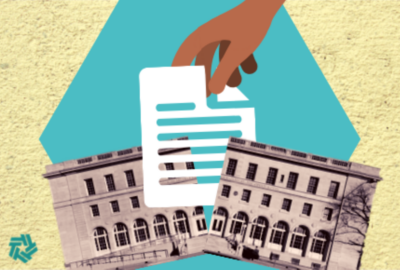Sponsored by Carahsoft
‘The people’s agency:’ USDA manages more high-impact services than any other agency
USDA counts six of its component agencies as High-Impact Service Providers (HISPs) — the most of any department across the federal government.
The Agriculture Department traces the start of its customer service journey back to its launch in 1862.
President Abraham Lincoln at the time dubbed USDA “the people’s department,” since nearly half of all Americans at the time lived on farms.
USDA’s mission still revolves around delivering services to the public — although its customer base extends well beyond just farmers. The sprawling department also provides benefits to children and families, as well as the general public.
“We are called the people’s agency, and I think rightly so,” said USDA Chief Customer Experience Officer Simchah Suveyke-Bogin. “It’s numerous amounts of services, but all really participating in that larger ecosystem of our agriculture, and a lot of what we’re having to use day-to-day as a member of the public.”
USDA counts six of its component agencies as High-Impact Service Providers (HISPs) — the most of any department across the federal government.
Those HISP agencies includes Farm Service Agency, National Resource Conservation Agency, Rural Development Agency, Recreation.gov, Forest Service and the Food and Nutrition Service.
When President Joe Biden signed an executive order in December 2021 calling on the entire federal government to step up its customer service to the public, USDA stood out as an agency already achieving these goals.
“We’re so proud to have a department-level focus on customer experience. This allows us to really think across the board, not just one agency at a time, but be able to really collaborate across agencies on what is it that we want to do. Because we have so many different parts of USDA … it is very difficult sometimes to wrap your arms around all the different customers and all the different needs, and improving all the services at once. There’s not one entity that can really do it all,” Suveyke-Bogin said.
Understanding the ‘voice of the customer’
USDA components are also leading their own CX initiatives. Rural Development has its own office dedicated to customer experience, and the Farm Service Agency is spearheading its own initiatives around incorporating customer feedback into service delivery improvements.
“By introducing practices like this, we’re seeing that some of the agencies at USDA have their own focus areas now on customer experience,” Suveyke-Bogin said.
USDA continues to find new ways to deliver a higher level of service to its customers. Earlier this year, the department launched a departmentwide policy on its “Voice of the Customer” program.
“This particular policy really reflected how important it is to be engaging and listening and measuring what our customers are saying, whether it’s about our brand hospitality, whether it’s about a particular service, just so we can introduce a little more mechanism of bringing that voice back into the department, and then allowing us to use it as additional data to make decisions,” Suveyke-Bogin said.
USDA incorporates customer feedback, as well as feedback from its employees, to identify pain points and bottlenecks in the services it provides.
“A lot of [employees] are really trying to deliver great service, and they deliver great customer service to our customers. But there are times where it gets very difficult and understanding it, observing where those hurdles are can really help us — whether it’s from a policy perspective, whether it’s operationally we need to make some changes, where to prioritize some of those adjustments. So, the employees are really a key to understanding all those opportunities.”
The Office of Management and Budget, in its recent guidance on delivering a “digital-first public experience,” said a majority of the public accesses government services online, and that a growing segment of that traffic comes from mobile devices.
To deliver on these goals, USDA recently launched its own digital service to provide a higher level of service to the public online.
“It’s really important that our customers fell that their government is working for them and really trying to make things easier. I think the normal sentiment around using government services is that it’s hard, it’s difficult, it’s time-consuming. And we really want to change that and build trust in. The memo elevates that quite a lot, not just with the HISPs and the high-impact service elements of those projects, but really emphasizing that we do it for all of the digital service delivery aspects of government.”
Building trust through customer experience
USDA is also taking a targeted approach to ensure its CX improvements are equitable and reach historically underserved populations. To meet these goals, the department often partners with academic institutions and community groups that have a more granular understanding of a local population’s needs.
“A lot of different entities already have that trust level, and already have that access to some of the communities that maybe are harder for us to reach. And by partnering them, it’s not only getting the word out, but it’s also us understanding some of that culture, some of the environment that we need to be considering when we deliver some of these services, And for us, that’s really terrific input to figure out, do we need to redesign this next time we put a service out similarly in the next year?” Suveyke-Bogin said.
USDA sees customer service delivery as a unique opportunity to build public trust in government institutions, and that individuals who receive excellent customer service from the department will become repeat customers.
“We’re very keen on making sure that we are elevating the trust level with the public that are using our services, at the end of the day. In order to do that, we have to understand what is their experience today, and baseline that. A big part of our Voices program is really to baseline that, especially for the programs who have never really measured that in a very methodical way, and introducing this type of metrics collection,” Suveyke-Bogin said.
“We always talk to different services at USDA, and we tell them that this is just one element of understanding the performance of your service. This is not the end-all-be-all, but it’s something to layer in with some of the operational key performance indicators that they’re already measuring, to see if they’re meeting their performance levels,” she added.
Discover more about how to elevate your customer experience in the “Excellent, equitable and secure customer experience: A closer look at high-impact service providers” series.
Copyright © 2024 Federal News Network. All rights reserved. This website is not intended for users located within the European Economic Area.
Jory Heckman is a reporter at Federal News Network covering U.S. Postal Service, IRS, big data and technology issues.
Follow @jheckmanWFED






